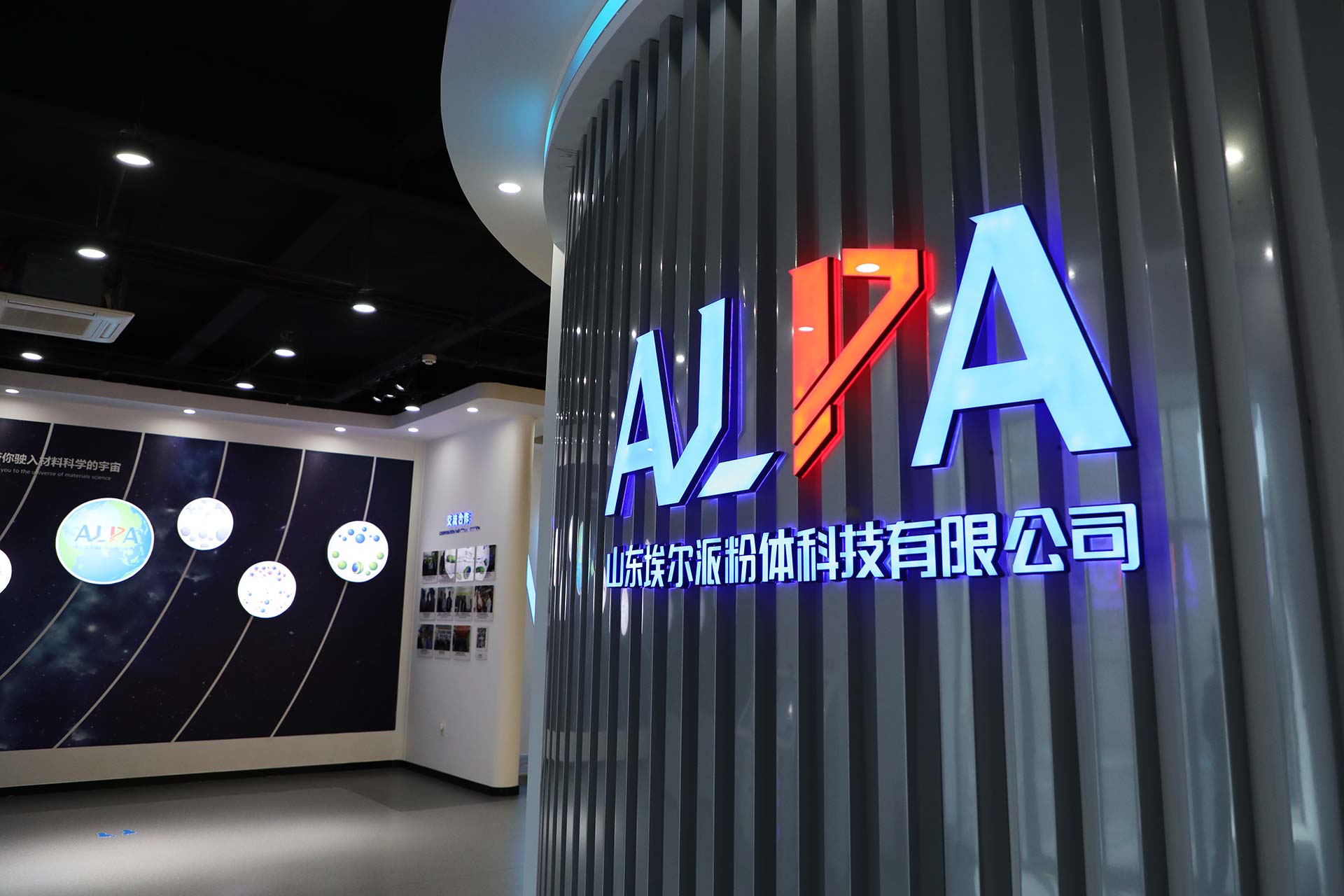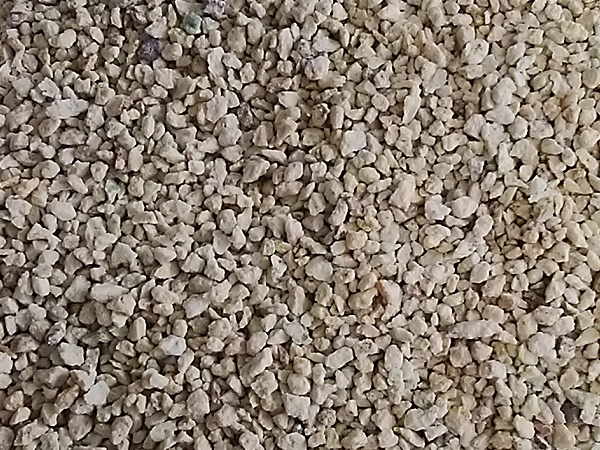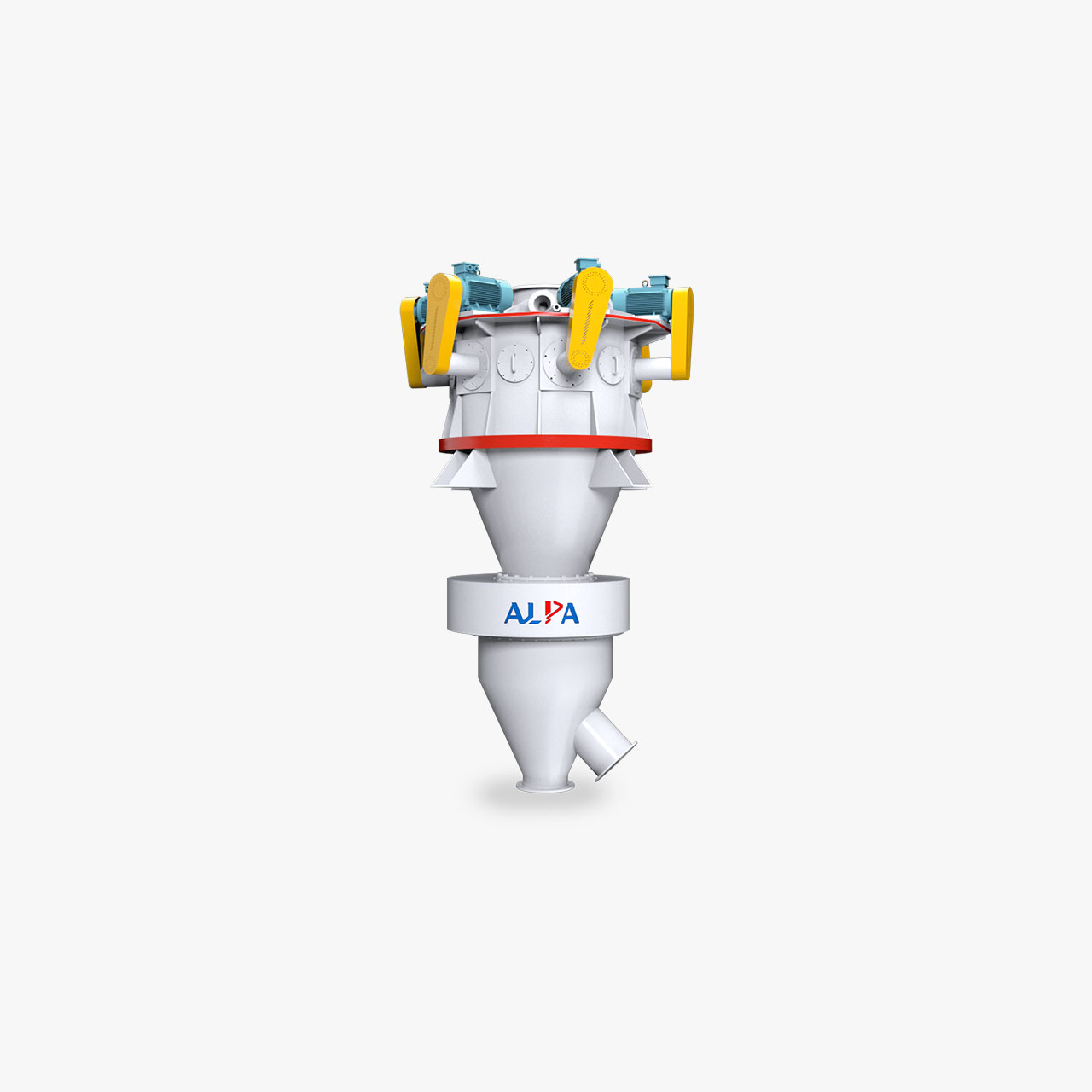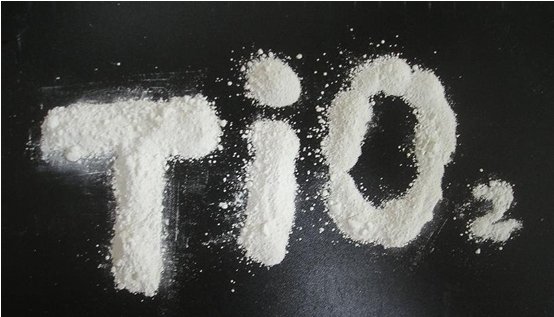Dry fine grinding technology applied in the field of agricultural chemistry
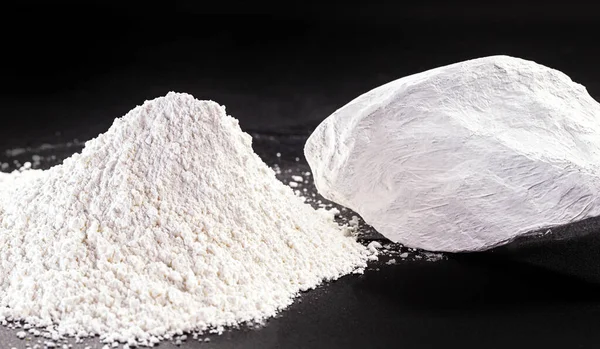
Production Process
The reason why pesticide manufacturers develop specific components and dosage forms is to make the active ingredients effective in reducing the factors that are unfavorable to crop growth (such as pests, weeds or fungi... ). Therefore, plant protection agents can be said to be essentially a mixture of different ingredients. These ingredients can basically be summarized into three categories:
active ingredient in the formulation.
Fillers for diluting active substances, such as clay, talc, kaolin or silica.
Auxiliaries and additives to improve formulation quality (e.g. stabilizers, wetting agents, protective agents, defoamers, etc.)
In the pesticide production process, the first step is feeding and mixing; the second step is grinding. Through different types of grinding equipment as shown below, the mixed material particles are ground and dispersed to the target fineness to meet the application requirements. After grinding, it goes through a sieving process to prevent possible oversized particles. Finally, the additives or fillers that do not need to be ground are added, and the dispersive mixing is carried out again.
Reasons why pesticide particles are required to be ultrafine particles and narrow particle size distribution:
The finer the active ingredient particles, the more potent the action, which means that a smaller amount can be used to achieve the same medicinal effect. Here are the safety, environmental and economical factors:
Reduce toxic effects on persons in the spray area.
Reduce pollution to the environment.
Reduce pesticide production costs and increase profits by reducing the amount of the most costly active ingredient used in the formulation.
Narrow particle size distribution facilitates the simplification of pesticide application steps:
The powder is dispersed in water before application on crops. The finer the particles, the more stable the suspension and no settling occurs during handling.
In the process of pesticide spraying, it effectively reduces the problem of large particles clogging the nozzle of the spraying system.
Mechanical impact mills can be used for fine grinding of soft to medium hard materials. Typical fineness ranges for the median particle size are 20 to 500 μm. The peripheral speed is 25 to 150 m/s. NETZSCH can also provide another model with counter-rotating method and a speed of up to 250 m/s. The air flow depends on the rotor type, thus ensuring temperature-stabilized grinding. The rotor is mounted horizontally and the shaft seal is of the non-contact labyrinth type due to the high shaft speed.
Mechanical mill CSM with grading function
This type of grading mill offers the possibility of simultaneously achieving both grinding and grading functions in one system. CSM classifier is a combination of fine impact classifier and guide wheel classifier. Driven by two independent motors, one for the grinding disc and the other for the classifying wheel, the CSM can precisely adjust the classifying wheel speed to obtain a wide range of final product fineness from d97=9μm to 200μm. By utilizing the geometric shape of the impeller of the classifier and the gap air seal between the classifier wheel and the top cover of the machine, the precise control of the upper limit of the particle size of the grinding material is ensured, thereby achieving fine classification.
The Fluidized bed jet mill is suitable for ultra-fine grinding of materials of various hardness (soft to extremely hard). In the grinding area, the particles are driven by the high-speed airflow to collide and grind each other, without additional grinding parts, and the dynamic classifier controls the maximum particle size. The air velocity at the outlet of the nozzle in the grinding chamber can reach 500 to 600 m/s. Because of the high grinding energy and impact velocity that can be generated in the fluidized bed, it is possible to achieve a D50 fineness of 1 to 5 μm.
Due to this structural feature, the jet mill has a very attractive feature: there is no temperature rise in the grinding chamber during the grinding process. The reason is that the heat generated when the particles collide with each other is offset by the cooling phenomenon of the expanded compressed gas, so that the temperature in the grinding chamber remains constant, and the active substance molecules will not be destroyed.
As a machinery manufacturer, ALPA has been devoting itself to designing grinding equipment and systems, and the machines have many designs that are convenient for customer maintenance. The design of the top cover with the grading wheel assembly can be fully opened, the rotating cavity shape and the properly selected maintenance door make it very easy for users to access the internal components. It is constructed of stainless steel, finely polished, and has a drain valve at the bottom of the grinder so it can be cleaned with water for easy cleaning.
Natural Zeolite Modification Technology and Its Application in Wastewater Treatment
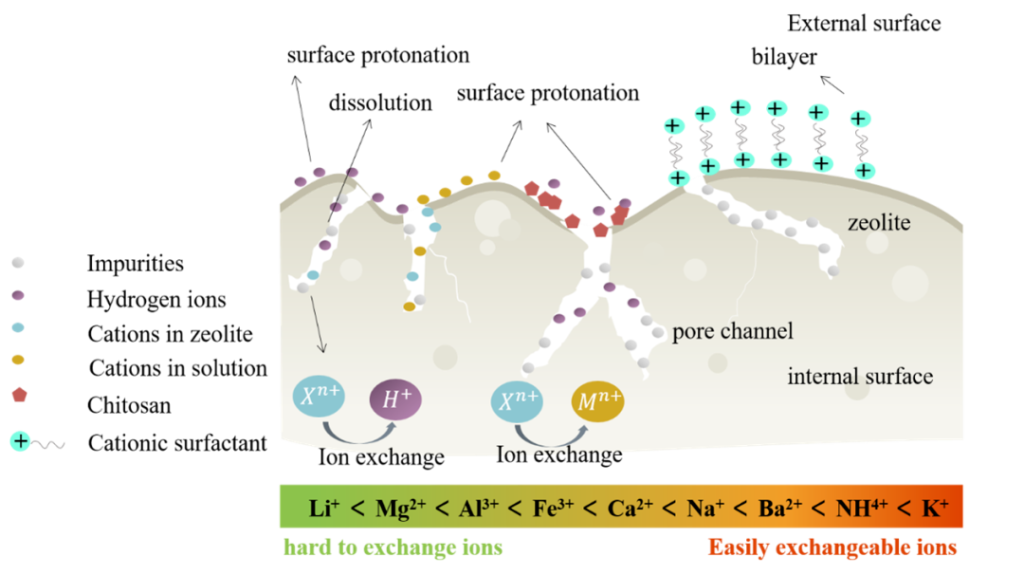
Among many water treatment technologies, adsorption method has become an ideal wastewater treatment technology due to its advantages of simple operation, low energy consumption, good removal effect and high selectivity. The development of low-cost and high-efficiency adsorbents is the core of adsorption methods. Compared with other synthetic high-efficiency adsorbents, low-cost natural adsorbents have higher economic benefits and environmental protection value.
The abundant pores and channels in natural zeolites and the negative charge on the surface make them have good adsorption capacity for cations and little adsorption capacity for anions. This greatly limits the application of natural zeolites in the removal of anionic pollutants in water. For this reason, many studies have been carried out on the modification of natural zeolites in order to increase the affinity for anions. Surface modification is an effective way to increase the affinity of natural zeolites for anionic pollutants.
Different modification methods will have different effects on the physical and chemical properties of zeolite, such as changing the internal pore structure and size of zeolite, as well as hydrophilic and hydrophobic and surface functional groups. The main purpose of physical modification is to remove some impurities on the surface of zeolite and increase the specific surface area. The purpose of chemical modification is: (1) to remove impurities and dredge pore channels to facilitate the entry and transfer process of target substances, (2) to introduce new functional groups to change the surface properties of zeolite, such as hydrophobicity, thereby providing Novel binding sites for target pollutants.
Composite modification can achieve the purpose of synergistic modification by combining multiple modification methods. In order to better balance the preparation cost and removal effect, it is a better choice to improve the adsorption capacity of natural zeolite to anionic pollutants in water by means of compound modification.
There are still many challenges in the practical wastewater treatment of zeolites. For example, the pore size of natural zeolites usually belongs to the category of micropores, which are smaller than the radius of anions, which will hinder their migration and diffusion inside the zeolite, which is not conducive to the adsorption process. Moreover, the components in the actual wastewater are complex and changeable, and zeolites are easily affected by coexisting ions and pH values, resulting in poor adsorption effects and even structural damage. In addition, the saturated zeolite may be transformed into a new pollution source if it is not properly disposed of.
(1) The surface modification method will affect the physical and chemical properties of natural zeolite. Composite modification is an effective way to improve the anion adsorption performance of natural zeolite. For example, by introducing mesoporous materials to expand the pore size of zeolite and improve the diffusion efficiency of anions in the internal structure of zeolite. By introducing functional groups with affinity for target pollutants, the adsorption sites of zeolites can be enriched and the adsorption selectivity can be improved.
(2) Combining natural zeolite with other water treatment processes or materials can effectively improve its application potential in actual wastewater treatment. The pollution components in actual wastewater are complex and changeable, and the combined use of multiple materials/processes has become the mainstream way to improve the effect of actual wastewater treatment. Materials or combined processes containing natural/modified zeolites have been widely used in the treatment of wastewater, domestic sewage, rivers and lakes, etc. Natural zeolites and their modified forms have good application prospects in practical wastewater treatment.
(3) The modification and regeneration process of zeolite may involve toxic solvents, causing great harm to the environment and human health. A safe, pollution-free preparation and regeneration scheme should be sought, or a stable encapsulation method developed as a practical solution for final and safe disposal of zeolites.
What are the methods and common equipment for powder classification?
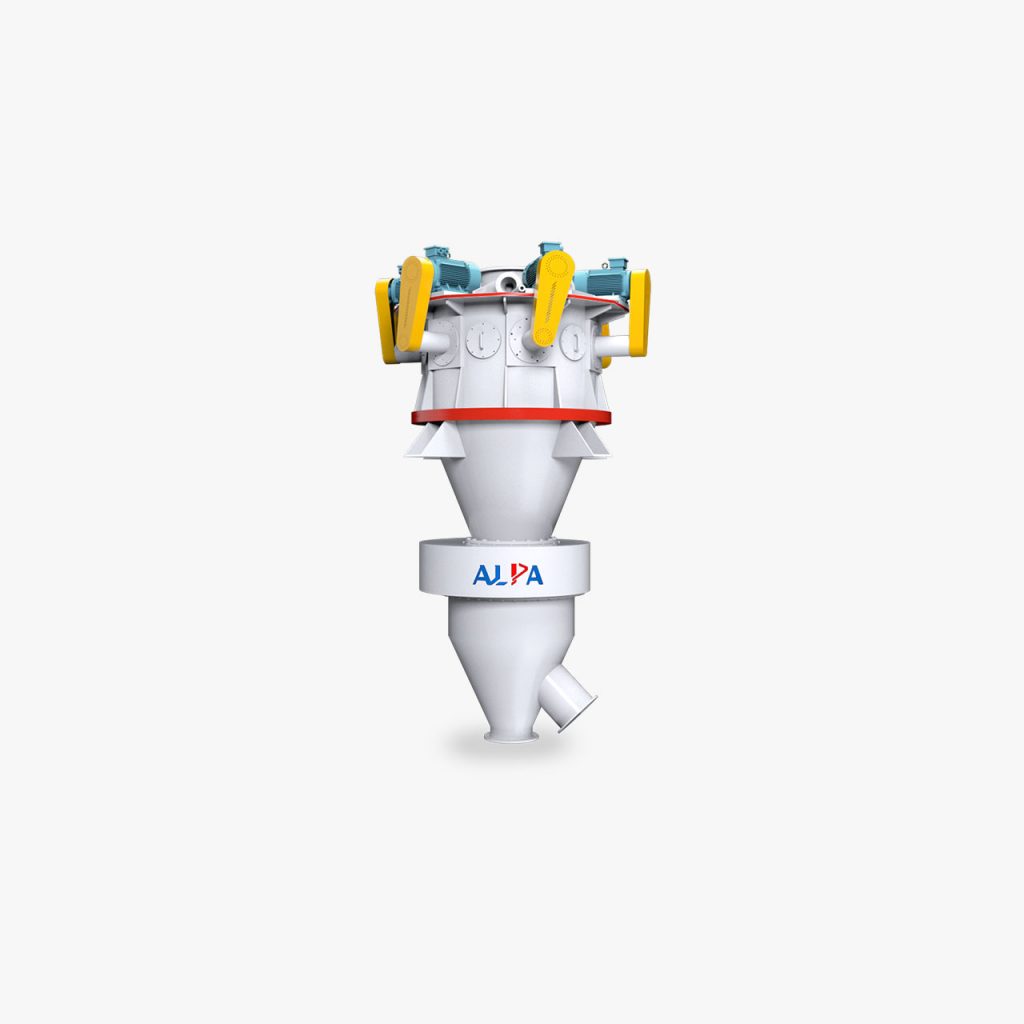
In terms of powder preparation, classification is of great significance, and it is one of the main deep processing technologies of powder in the field of inorganic non-metallic materials. Based on the particle size requirements of modern industry for fine powders, classification technology has shown more and more important status. It is not difficult to manufacture micron-sized powders, but how to reduce energy consumption and produce powders with very fine particle size and narrow particle size distribution is a challenge encountered in recent years.
The key of grading technology lies in grading equipment and grading process. In order to meet the high-precision classification, it is required to optimize the combination of various classifications. Therefore, it is particularly important to understand and master the main types and structural principles of grading equipment for the optimization of the grading process. In this field, it mainly involves fine particle classification, which is classified according to the nature of the medium. There are two types of fine classification: dry classification (the medium is air) and wet classification (the medium is water or other liquids).
The fluid medium of dry classification is generally gas, which can be divided into gravity classification, inertial force classification and centrifugal force classification according to the force. Next, I will introduce the grading principle, application scope and characteristics of representative grading equipment in dry grading.
Gravity Classification & Inertial Force Classification
The principle of gravity classification is to classify particles of different sizes in the gravitational field with different final settlement velocities. In a suitable gas medium, under a certain temperature, for a particle with a certain density, the final sedimentation velocity is only related to the particle diameter. In this way, classification according to particle size can be realized according to the difference in the end velocity of particle sedimentation. According to the direction of air flow, it can be divided into horizontal flow type, vertical flow type and zigzag flow type.
Inertial force classification is the operation of dispersing and suspending solid particle groups in the airflow and changing the direction of movement of the airflow sharply, using the difference in inertial force between light and heavy particles to classify the particle group. Its representative devices include curved inertial classifier, elbow jet inertial classifier and K-type classifier.
Centrifugal force classification
Principle: Because the force on the fine particles in the gravitational field is too small, it is difficult to classify the fine particles, so the centrifugal force field is used instead of the gravitational field to achieve the purpose of strengthening the classification. The gas flows through the rotor, and the fine particles flow together with the gas flow due to the drag force of the gas flow. When entering the interior of the rotor, the particles are subjected to outward centrifugal force. When the air drag force is greater than the centrifugal force, the particles pass through the rotor together with the air and become fine products; otherwise, the particles cannot pass through the rotor and become coarse products.
Scope of application: It is suitable for fine classification of micron-sized products in dry process. It can classify spherical, flake and irregular particles, and can also classify particles of different densities. The particle size of the graded product can reach D97: 3-150 microns, the product particle size can be adjusted steplessly, and the variety replacement is extremely convenient.
Classification efficiency: 60% to 90%. The classification efficiency is related to the properties of the material and the content of particles that meet the particle size. If the material has good fluidity and the content of particles that meet the particle size requirements is high, the efficiency will be high, and vice versa.
Equipment features: It has the advantages of stepless adjustable product size, high classification efficiency, and accurate cutting point.
Application industry: Widely used in chemical industry, minerals (especially suitable for the classification of non-mineral products such as calcium carbonate, kaolin, quartz, talc, mica), metallurgy, abrasives, ceramics, refractory materials, medicine, pesticides, food, health care products, new materials, etc. industry.
Titanium dioxide inorganic and organic coating modification technology
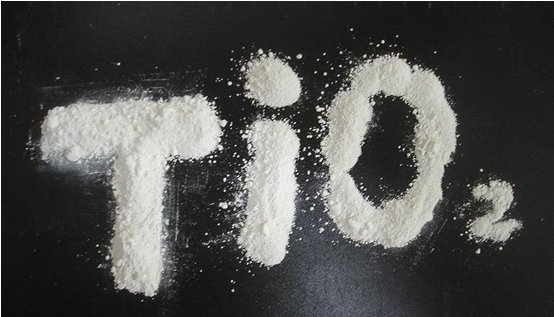
Rutile titanium dioxide is a semiconductor with a bandgap width of about 3.0eV. It has strong photocatalytic activity without surface modification, so that it can produce highly active oxygen free radicals under the radiation of solar ultraviolet rays. , this oxygen free radical can exert a strong oxidation ability, which will damage the medium around titanium dioxide and affect the service life of the product. Therefore, surface modification is an extremely important task in the production and processing of titanium dioxide.
Surface modification is the use of modifying additives to react with the surface of titanium dioxide, thereby changing the surface characteristics and improving the performance of the product. At present, the surface modification of titanium dioxide is roughly divided into two methods: inorganic coating and organic coating.
1. Titanium dioxide inorganic coating
Inorganic coating is to coat the surface of titanium dioxide particles with a single-layer or multi-layer inorganic thin film by means of sedimentation reaction, forming a barrier between the particles and the medium, so as to improve the performance of titanium dioxide. Inorganic surface modification of titanium dioxide is generally carried out by aluminum coating, silicon coating, zirconium coating and multiple mixed coating methods.
For silicon coating, the film formed under neutral and slightly acidic conditions is relatively "fluffy", while the film formed under alkaline conditions is relatively dense, generally through the hydrolysis of sodium silicate to generate silicon The micelles are then fixed on the surface of titanium dioxide through Ti-O-Si bonds, and at the same time, the formation of Si-O-Si bonds can also be used to ensure that the film is continuous and uniform.
For aluminum coating, the Ti-O-Al bond is formed through the reaction of OH-Al and the -OH group on the surface of titanium dioxide. The increase in the number of clusters facilitates the coating. At the same time, under high pH conditions, the directional growth rate of OH-Al occupies a dominant position relative to the sedimentation rate when the temperature is raised, and the film morphology changes from uniform and continuous sheet-like layers to relatively loose flocs.
Inorganic coating is specifically divided into two methods: dry coating and wet coating according to different processing methods.
(1) Titanium dioxide dry coating
In dry coating, metal halides are generally attached to the surface of titanium dioxide by air spraying, and after roasting and oxidation, hot steam is introduced to promote its hydrolysis to form a thin film coating on the particle surface.
(2) Titanium dioxide wet coating
Wet coating is mainly carried out in water medium, which is also subdivided into three types: boiling method, neutralization method and carbonization method.
2. Titanium dioxide organic coating
The development history of organic coating is shorter than that of inorganic coating, but it develops very rapidly due to the characteristics of small dosage (usually only 0.1% to 1% of the weight of the pigment) and large effect. There are three main methods of organic coating in the laboratory, namely high-speed dispersion wet method, vibration dispersion method and gas powder machine pulverization method. In the daily experiment process, we mainly adopt the high-speed dispersion wet method for processing.
Generally, in the process of organic coating, a part of the organic treatment agent is connected to the surface of the titanium dioxide by physical adsorption, and the other part reacts with the hydroxyl groups on the surface of the particles and then closely combines with the surface of the titanium dioxide. Dispersants, coupling agents, surfactants, etc. are used.
3. Composite coating with titanium dioxide
Since inorganic coating and organic coating have their own emphasis. Generally speaking, the main purpose of inorganic coating is to reduce the photocatalytic activity of titanium dioxide, improve its weather resistance, thereby increasing the service life of the product, while the main purpose of organic coating is to improve the dispersion ability of the product in various media and dispersion stability.
The two methods cannot replace each other, so in practical application operations, the operation mode of first inorganic coating and then organic modification is mostly used to modify the surface of titanium dioxide particles to achieve the purpose, that is, to use silicon, Soluble inorganic sources such as aluminum and zirconium (such as silicon dioxide, aluminum oxide, etc.) complete one or even multiple layers of inorganic coatings under their respective appropriate temperature and pH conditions to enhance their weather resistance. Then select a suitable bridging structure to connect fatty acid or aromatic acid groups with strong hydrophilicity to enhance its water dispersibility and dispersion stability.
Grinding of refractory raw materials
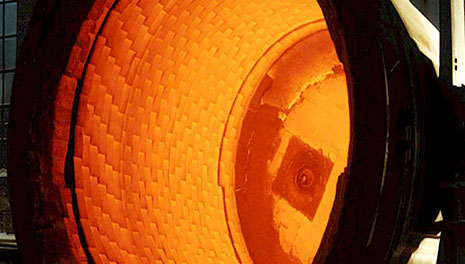
Crushing is an essential process in the refractory industry. The raw materials delivered to the factory range from powder to about 350mm, most of which are blocks over 25mm. The crushing process and raw material selection in the factory are the key to the production of high-quality products, which have a direct impact on the properties of the product. In addition, from the point of view of cost accounting, the power consumed by crushing and crushing equipment accounts for a large proportion. In order to save energy and reduce costs, attention must be paid to the crushed process.
The essence of the crushing process is related to the following factors, that is, overcoming the surface tension of the material's surface particles and overcoming the Coulomb attraction between the material's internal particles. Starting from the basic concept of the silicate physical and chemical dispersion system, it is not difficult to see that the particles of the crushed material are still very large when they are first crushed, so the surface and surface energy of the particles are small. , It is difficult to crush the material below 1μm (micron), the smaller the particle, the higher the surface energy, so when finely crushing, more energy will be consumed to overcome the surface energy. In addition, during fine grinding, due to the accelerated thermal movement of particles, the collision probability of particles increases, and coalescence and coagulation may also occur. Therefore, the crushing process must be organized correctly, and the crushing method and equipment should be selected according to the degree of dispersion of the final product.
The purpose of crushing:
(1) Crushing is an important operation link in the beneficiation process. When separating and enriching particles of the same component from raw ore aggregated by two or more different minerals, the raw ore should be crushed first in order to distinguish by type.
(2) In order to promote the interaction between the various phases, or evenly disperse the solid particles into the liquid, for example, prepare mud.
(3) Prepare various particle sizes according to process requirements. Increase the lattice defects and specific surface of the material, accelerate the physical and chemical reactions, and promote sintering.
The crushing methods can be roughly divided into the following four types: extrusion, impact, grinding and splitting. The function of various crushing machines is a combination of the above methods.
Crushing is divided into dry crushing and wet crushing. Wet crushing is mostly used in the production of ceramics or special refractory materials. Compared with dry crushing, it has the following advantages:
(1) The crushing ratio is large, and the particle size of the crushed material is small;
(2) The crushing efficiency is high, and the phenomenon of "powder wall" during dry crushing is not easy to occur (but when the particle size of the crushed product is less than 0.01mm, powder aggregation will also occur);
(3) The friction loss of equipment and grinding body is small;
(4) Good dust prevention, which is conducive to civilized production and process automation.
In addition, there are low-temperature crushing, dry crushing, and self-generating crushing based on the impact and friction of crushed materials, which are classified according to the crushing medium.
When crushing raw materials, the volume density and strength index of the material are of great significance to the selection of crushing equipment and the analysis of crushing efficiency.
The characteristics and application of zirconia powder
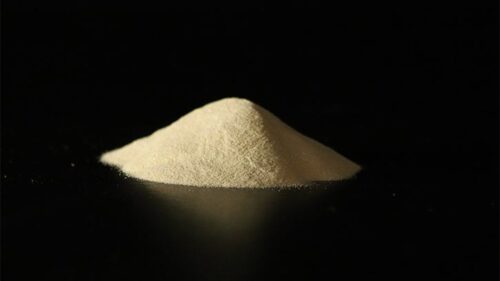
Zirconia ceramics is a new type of high-tech ceramics. In addition to its high strength, hardness, high temperature resistance, acid and alkali corrosion resistance and high chemical stability, it also has the characteristics of scratch resistance, no signal shielding, and excellent heat dissipation performance. , At the same time, it has strong machinability and good appearance effect, and is suitable for mass production.
1 High melting point
The melting point of zirconia is 2715°C. The higher melting point and chemical inertness make zirconia a good refractory material.
2 High hardness and good wear resistance
Zirconia ceramics have greater hardness and better wear resistance. From the specific data, the Mohs hardness of zirconia ceramics is about 8.5, which is very close to the Mohs hardness of sapphire 9, while the Mohs hardness of polycarbonate is only 3.0, the Mohs hardness of tempered glass is 5.5, and the Mohs hardness of aluminum-magnesium alloy The Mohs hardness of Corning glass is 6.0, and the Mohs hardness of Corning glass is 7.
3 Relatively high strength and toughness
Zirconia ceramics have high strength (up to 1500MPa). Although there is a big gap in toughness compared with some metals, compared with other ceramic materials, zirconia ceramics are considered to be the best in the "ceramic circle" (1-35MPa .m1/2).
4 Low thermal conductivity, low coefficient of expansion
The thermal conductivity of zirconia is the lowest among common ceramic materials (1.6-2.03W/(m.k)), and its thermal expansion coefficient is close to that of metal. Therefore, zirconia ceramics are suitable for structural ceramic materials, such as zirconia ceramic mobile phone appearance structural parts.
5 Good electrical performance
The dielectric constant of zirconia is 3 times that of sapphire, the signal is more sensitive, and it is more suitable for fingerprint recognition patches, etc. From the perspective of shielding effectiveness, zirconia ceramics, as a non-metallic material, have no shielding effect on electromagnetic signals, and will not affect the internal antenna layout at all, and can be easily integrated to adapt to the 5G era.
Zirconia ceramics are widely used in modern industry and life. Let's briefly introduce its main applications.
1 Mobile phones and other 3C electronics fields
Zirconia ceramics have no signal shielding, are resistant to falling, wear and folding, and at the same time have a warm and jade-like appearance and a good hand feel. They are widely used in 3C electronics such as mobile phones. Mainly used as mobile phone backplane and other mobile phone structural parts.
2 Smart wear field
Compared with metal, zirconia ceramics have better wear resistance, smooth surface, good texture, and no oxidation. Well-known brands such as the famous Swiss "Radar" brand, Apple, and Chanel have launched high-end ceramic watches.
3 Optical communication field
At present, ceramic ferrules and sleeves are widely used in optical fiber connector connectors. The ceramic ferrule made of high-strength and high-toughness ceramics can not only meet the high-precision requirements, but also have a long service life and very low insertion loss and return loss.
4 Biomedical field
Due to high strength, high toughness, corrosion resistance, wear resistance and good biocompatibility, zirconia ceramic materials are most commonly used in the field of biomedicine as dental restoration materials and surgical knives.
5 Automotive field
The thermal conductivity of zirconia ceramics is small, and the thermal expansion coefficient is relatively large, so the components used to make the engine combustion chamber have good heat insulation, and at the same time, they are closer to metal materials in terms of thermal expansion. It can be used as cylinder head bottom plate, cylinder liner, piston crown, valve seat ring, etc. However, due to the harsh working conditions of the engine, the strength of ceramic components changes greatly at high temperatures, so there is still a long way to go before commercial application.
6 Jewelry field
High-precision ceramics and precious metal alloy powder are mixed and fired, and finally integrated into jewelry design after several precise and strict procedures and multiple machine polishing. This ceramic is not only light and wear-resistant, but also has anti-sensitivity properties and is comfortable to wear.
7 Daily life
Ceramics have the characteristics of high temperature resistance, corrosion resistance, oxidation resistance, high strength, wear resistance, and natural antibacterial properties, and can be used as porcelain bowls and spoons, vases, ceramic knives, etc.
8 Other fields
Zirconia ceramics have good mechanical properties, and are wear-resistant and corrosion-resistant. They can be used as ceramic bearings and can also be made into ceramic knives.
Preparation and Present Situation of Ultrafine Non-metallic Mineral Powder
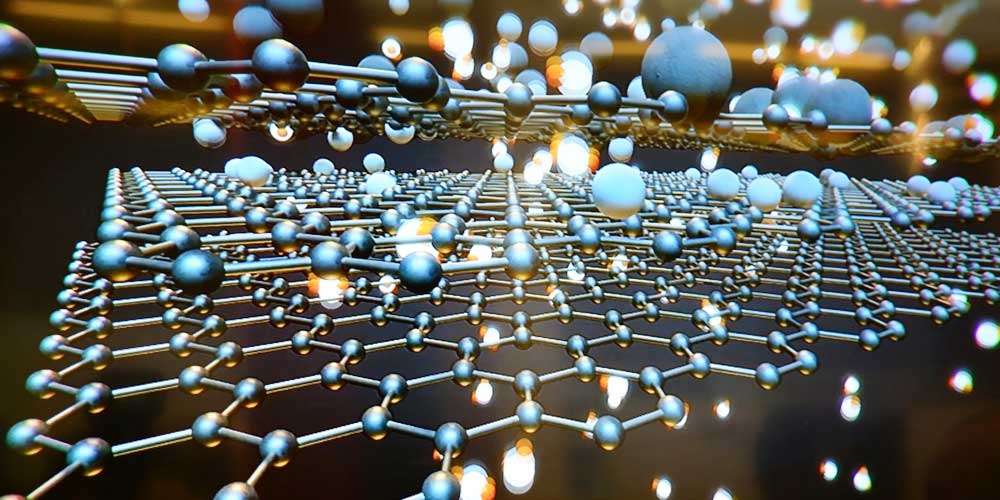
With the application of non-metallic mineral resources in various fields of economy and society, the development of non-metallic mineral resources has been significantly strengthened. Since these non-metallic minerals are used in many fields, there is a form of powder utilization, which makes non-metallic mineral powder in the industry. Processing technology puts forward higher requirements, such as ultra-fine.
Ultrafine powder refers to a series of ultrafine materials with particle sizes ranging from micrometers to nanometers. At present, the wide application of non-metallic mineral powders in modern high-tech new materials is based on their unique functions. The function of most non-metallic minerals depends on the particle size, distribution and particle shape. Such as reinforcement or reinforcement in polymer-based composite materials, strength and toughness of ceramic materials, covering ratio, coloring power as pigments for papermaking and coatings, and electrical, magnetic, optical, wave-absorbing and shielding properties of powders , catalysis, adsorption, rheology, antibacterial, decolorization, bonding, etc. are all related to its particle size, particle size distribution and particle shape.
Due to the ultrafine powder has excellent physical and chemical properties such as large specific surface area, high surface activity, fast chemical reaction speed, low sintering temperature, high sintered body strength, good filling and reinforcing performance, and high covering rate. Many application fields require fine particle size (micron or submicron) of non-metallic mineral raw materials (materials).
At present, in the processing of ultrafine non-metallic ore powder, physical method is the main preparation method. And generally speaking, the process of making raw materials into ultrafine powder is mainly divided into two steps: crushing and classification. The material first enters the ultra-fine crushing equipment for crushing. Because the structure of each particle is different, the energy required for crushing is different, and the force received in the crushing equipment is not equal, so the shape and size of the fine particles after crushing are not the same. , only part of the particles meet the particle size requirements. In the actual production process, the particles are often fully crushed by prolonging the crushing time to meet the particle size standard, which not only increases energy consumption, but may also lead to excessive crushing. Therefore, it is necessary to separate the particles with the required particle size in time, so the ultrafine classification technology also plays an important role in the preparation process of ultrafine powder.
At present, the commonly used ultrafine grinding equipment mainly includes impact mill, stirring mill, jet mill and vibrating mill. Regardless of how the powder industry develops, the main means of obtaining ultra-fine non-metallic mineral powders is still mechanical pulverization.
The classification of ultrafine powder is based on the fact that particles of different particle sizes are subjected to centrifugal force, gravity, inertial force, etc. in the medium, resulting in different motion trajectories, so as to realize the separation of particles of different particle sizes and enter their respective collection devices.
According to the different media used, the ultra-fine grade is generally divided into two types: dry type and wet type. Wet classification uses liquid as the dispersion medium, with high classification accuracy and good uniformity. However, there are a series of follow-up operational problems such as drying and wastewater treatment in wet classification, which limits its development.
At present, the classification equipment widely used in industrial production is the turbine air classifier, which can be divided into vertical wheel type and horizontal wheel type according to the installation form of the classifying wheel.
In the course of years of exploration and practice, non-metallic ore powder ultra-fine processing technology is becoming more and more mature, and there are more and more technical processes and equipment on the market. In order to improve production capacity and efficiency, relevant enterprises are carrying out non-metallic ore powder processing. In the process, combined with its own production reality and needs, make a comprehensive selection of technologies, processes and equipment, and strengthen the control of relevant parameters and process adjustments in the processing process.
Application of lithium minerals in the production of high-grade glass and ceramics
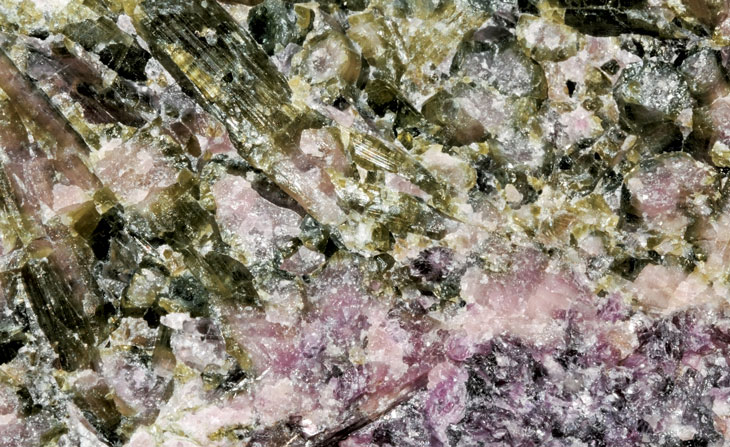
With the advent of new energy vehicles, lithium batteries have become the focus of attention and the subject of scientific research. Lithium-containing minerals not only have great potential in the field of new energy, but also have important functions and play a special role in the high-grade glass industry. Both spodumene and petalite are lithium-containing minerals and are raw materials for extracting lithium. The two are often produced in granite pegmatites and become paragenetic minerals. Because of its special physical and chemical properties, it is widely used in the production of high-grade glass and ceramics.
1. Glassware
In the production of glassware, although lithium oxide is not an important part of the glass composition, it has excellent melting ability, which can reduce the melting temperature, prolong the service life of the furnace, improve the melting efficiency, and thus improve product quality. Adding spodumene concentrate can be used to produce high-grade glassware for packaging of cosmetics. Low-grade glass-grade spodumene has also been gradually accepted by the market.
2. Tableware
In the production of containers, the Fe2O3 content of tableware is significantly lower than that of similar products. The use of spodumene with high lithium oxide content and low iron content can ensure that the product meets the specified color requirements. In addition, high-quality spodumene can not only lower the melting point, but also reduce the viscosity of the melt. Therefore, the formability is good, and the production efficiency will be significantly improved.
3. Fiberglass
The use of lithium oxide in glass fiber production can not only reduce the damage of fluorine to the environment, but also have the same effect as in the production of glassware, such as lowering the melting point and improving the melting effect, thereby improving production quality. The viscosity of the melt is low, easy to operate, low working temperature and long service life of the equipment.
4. TV display screen
Lithium oxide extracted from spodumene concentrate or petalite is the main component of monochrome televisions. The combination of lithium oxide and barium reduces the radiation transmitted through the panel, improving the molding characteristics and surface finish of the display. In the application of color TV, since the use of lead is gradually banned, it is replaced by lithium oxide. Zirconia and barium are increasingly used in formulations, while lithium oxide is used as a flux.
5. High temperature ceramic products
In the established ceramic industry, lithium is an important part of the formulation. Spodumene as a low expansion rate filler contributes to the formation of the low expansion rate lithium aluminosilicate phase. Add a large amount of spodumene, and choose an appropriate calcination temperature, the following reactions occur:
Li2O.Al2O3.aSiO2+SiO2= Li2O.Al2O3.8SiO2
(spodumene) + (silicon oxide) = (β-spodumene solid solution)
Free silica is assimilated in β-spodumene solid solution, exhibiting almost negligible thermal expansion. Therefore, the product has thermal shock resistance.
6. Glaze
Lithium oxide can be used to reduce the viscosity of the melt and improve the fluidity of the coating. It can also reduce firing time and firing temperature.
7. Fully vitrified ceramics
Spodumene plus feldspar flux can reduce the firing temperature of general sanitary ware by 30-40°C. The Italians added spodumene to the ultra-white ceramic body to reduce the shrinkage effect and thus improve production efficiency. The low porosity green body with spodumene added ensures minimum dust absorption while increasing combustion efficiency.
With the wide application of lithium oxide in ceramics, glass fiber, flat glass and color TV, etc., it has gradually expanded to the metallurgical industry. Lithium oxide can be used to change the viscosity of slag, improve metal recovery and reduce the possibility of slag in the metal.
Nano calcium carbonate surface modification effect
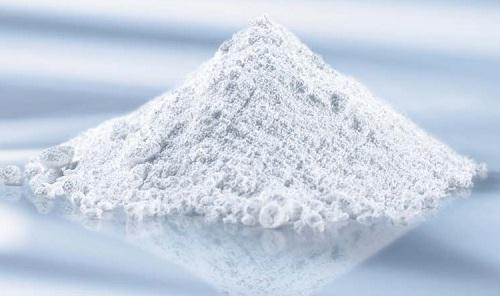
The evaluation of modification effect is an essential link in the modification process. Some conjectures can be verified by some detection methods, and the modification process can be adjusted and optimized by analyzing its influencing factors to improve the performance of nano-calcium carbonate.
There are mainly two traditional evaluation methods, one is to directly detect and evaluate the modified sample, and the other is to make the modified sample into a composite material to investigate the performance improvement effect of the composite material due to modification. In comparison, direct evaluation is fast and efficient.
1. Activation index and oil absorption value
Activation index and oil absorption value are commonly used evaluation indicators for the modification effect of nano-calcium carbonate. The activation index can be used to evaluate the hydrophobic effect of nano-calcium carbonate after surface modification, and the oil absorption value refers to the oil consumption of nano-calcium carbonate in application. Generally speaking, the higher the activation index and the lower the oil absorption value, the better the modification effect.
2. Hydrophobicity
Hydrophobicity is an important evaluation index of nano-calcium carbonate, and it is also a research hotspot in the modification of nano-calcium carbonate. The static contact angle can be used to characterize the hydrophobicity of nano-calcium carbonate. The type of modifier has a significant impact on the hydrophobicity of modified nano-calcium carbonate. Stearic acid, silane coupling agent, oleic acid, titanate coupling agent, etc. are commonly used hydrophobic modifiers. During the surface modification process, these modifiers are gradually attached to the surface of the particles, thereby reducing the surface energy of the nano-calcium carbonate particles.
3. Coating amount and coating rate
By detecting the coating amount and coating rate, the coating situation of nano-calcium carbonate can be understood, which is of great help to the study of the modification mechanism and the evaluation of the modification effect. Usually, according to the decomposition temperature or volatilization temperature of different substances, the modified nano-calcium carbonate can be subjected to thermogravimetric analysis to obtain the coating amount of the modifier, and then the coating ratio can be obtained.
In addition, some researchers have constructed a corresponding coating model through the study of the modifier mechanism, thereby calculating the theoretical coating amount or coating rate, and understanding the coating situation by comparing it with the actual coating amount or coating rate. , and also provides a practical basis for the study of the modification mechanism.
4. Particle size and shape
The particle size and morphology of nano-calcium carbonate mainly depend on its preparation process. Therefore, in the process of in-situ modification, process conditions such as liquid phase concentration, stirring rate, temperature, and the type and concentration of modifiers will affect the nano-calcium carbonate. By controlling the nucleation, crystallization and growth of these factors, nano-calcium carbonate with different shapes and sizes can be prepared.
5. Whiteness
For coatings, papermaking, rubber, plastics and other industries, whiteness is an important indicator for evaluating nano calcium carbonate. The whiteness of modified nano-calcium carbonate is not only related to the choice of modifier, but also related to moisture, drying temperature and drying time. Generally, the longer the drying time, the higher the temperature and the less moisture, the The higher the whiteness.
6. Dispersion
Nano-calcium carbonate can be widely used as a filler in rubber, plastic, paper and other industries. Therefore, the dispersion of nano-calcium carbonate in the organism is also an important evaluation index. By scanning the filled organism with an electron microscope, it can be visually observed Distribution of nano calcium carbonate. In addition to the performance and modification effect of nano-calcium carbonate itself, its filling amount is also an important factor affecting the dispersion.
Organic Modification Method of Clay Minerals
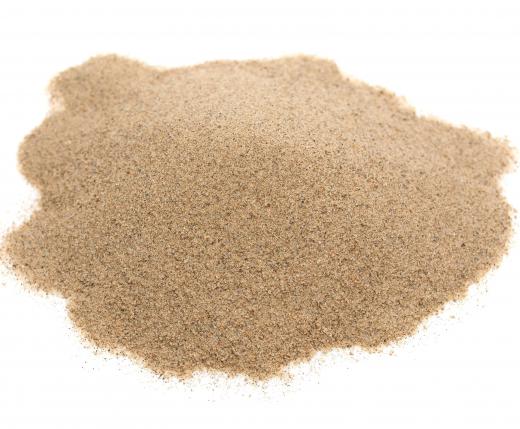
Compared with other adsorbents, clay minerals are often used as natural adsorbents due to their low cost, large specific surface area, and high cation exchange capacity.
In recent years, people use natural clay minerals such as kaolinite, montmorillonite, illite and bentonite to remove organic pollutants and anion pollutants in water. However, studies have shown that natural clay minerals have a certain adsorption capacity for anionic pollutants, but their adsorption capacity for organic pollutants is weak. This is because there are many hydrophilic inorganic cations on the surface of clay minerals, making the surface of clay minerals hydrophilic in a wet state, and it is difficult to directly adsorb hydrophobic organic pollutants.
By modifying natural clay minerals with surfactants, polymers, and silane coupling agents, the surface of clay minerals can be transformed from hydrophilic to hydrophobic, and an organoclay adsorbent with low cost and strong adsorption performance can be obtained. It can effectively improve the adsorption of clay minerals to hydrophobic organic pollutants.
1. Surfactant
Surfactant molecules are composed of two groups with completely different properties, namely hydrophilic group and hydrophobic group. According to the dissociation of hydrophilic groups in aqueous solution, surfactants can be divided into cationic surfactants, anionic surfactants and nonionic surfactants. And because of its environmental friendliness and low toxicity, it is often used as a clay modifier.
(1) Cationic surfactant
The mechanism of using cationic surfactants to modify clay minerals is usually an ion exchange reaction, that is, organic cations in cationic surfactants replace inorganic cations (such as Na+, Ca2+, etc.) between clay mineral layers.
(2) Anionic surfactants
The hydrophilic groups of anionic surfactants are negatively charged groups, and there are also negatively charged groups on the surface of clay minerals, so that anionic surfactants cannot be adsorbed on the surface of clay minerals by electrostatic attraction. At present, the modification mechanisms of anionic surfactants on clay minerals are mainly hydrophobic bonding and hydrogen bond formation.
(3) Cationic and anionic composite surfactants
(4) Gemini surfactants
Gemini surfactants (dimer surfactants) are composed of two hydrophobic alkyl carbon chains and hydrophilic groups, linking groups and counter-ionic groups. Compared with traditional alkyl quaternary ammonium cationic surfactants, clay minerals modified by gemini surfactants usually have higher adsorption capacity and lower modifier release, so they are widely used in the field of sewage removal.
(5) Non-ionic surfactants
Nonionic surfactants do not dissociate in water, and their hydrophilic groups are usually ester groups, carboxyl groups, and hydroxyl groups, which can interact with hydroxyl groups on the surface of clay minerals to generate hydrogen bonds and adsorb on the surface of clay minerals.
In addition, it has been reported that organoclay minerals modified by nonionic surfactants have larger interlayer spacing and higher chemical stability than organoclay minerals modified by cationic surfactants, and have better application prospect.
2. Polymer
Polymers can modify clay minerals through physical adsorption, ion exchange and chemical grafting, and improve the adsorption performance of clay minerals.
The physical adsorption modification method refers to that the polymer is adsorbed on the surface of the clay mineral due to its own charged or functional groups forming hydrogen bonds with the hydroxyl groups on the surface of the clay mineral, and changes the physical and chemical properties of the surface. The advantage of physical adsorption is that it does not change the structure of clay minerals. The disadvantage is that the force between the polymer and the clay mineral surface is relatively weak, and it is easily disturbed by factors such as temperature and pH value.
The chemical grafting of polymers to the surface of clay minerals belongs to chemical adsorption, and the condensation of polymers and reactive groups of clay minerals makes the polymers bonded to the surface of clay minerals. Clay minerals modified by chemical adsorption are more stable than those modified by physical adsorption.
3. Silane coupling agent
Silane coupling agents, also known as organosilanes, are composed of non-hydrolyzable groups, short-chain alkylene groups, and hydrolyzable groups. Silane coupling agents modify clay minerals, usually by hydrolyzing the hydrolyzable groups of silane into hydroxyl groups and then condensing with the hydroxyl groups on the surface of clay minerals to form stable Si-O-Si or Si-O-Al covalent bonds and adsorbed on the clay. mineral surface.

